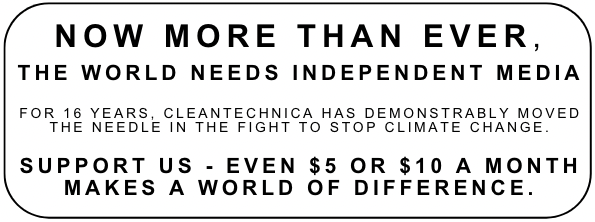New Way To See How Much Methane Is Being Released From Arctic Lakes
 Sign up for CleanTechnica's Weekly Substack for Zach and Scott's in-depth analyses and high level summaries, sign up for our daily newsletter, and/or follow us on Google News!
Sign up for CleanTechnica's Weekly Substack for Zach and Scott's in-depth analyses and high level summaries, sign up for our daily newsletter, and/or follow us on Google News!
There’s a new way to see how much methane is being released from Arctic lakes. Using synthetic aperture radar (SAR), a research team at the University of Alaska Fairbanks was able to study satellite images differently. This new “sight” helped them to “see” just how much methane is being released from Arctic lakes.
This could help climate change modelers accurately monitor potent greenhouse gas. With SAR, researchers were able to see the parallels between “brighter” satellite images of frozen lakes and the amount of methane they produce.
When comparing the SAR images with ground-level methane measurements, this confirmed that the satellite readings matched the onsite data. The SAR data, provided by UAF’s Alaska Satellite Facility, can penetrate dry snow and can work in all types of lighting conditions — daylight and/or cloudy.

Another thing SAR helps researches find is frozen lakes filled with bubbles that often form in ice when methane is present.
Lead author of the study and researcher at UAF’s Water and Environmental Research Center, Melanie Engram, said “We found that backscatter is brighter when there are more bubbles trapped in the lake ice. Bubbles form an insulated blanket, so ice beneath them grows more slowly, causing a warped surface which reflects the radar signal back to the satellite.”
Even though previous research confirmed that vast amounts of methane were being released from thermokarst lakes due to thawing of the permafrost, collecting this data onsite is almost impossible. The challenges in logistics, as well as the costs, have made this type of information scarce.
“The new technique is a major breakthrough for understanding the Arctic methane budget. It helps to resolve a longstanding discrepancy between estimates of Arctic methane emissions from atmospheric measurements and data upscaled from a small number of individual lakes,” said Katey Walter Anthony, a UAF researcher who also contributed to the study.
SAR will help researchers in the future to be able to see methane more clearly as technology continues to evolve.

Have a tip for CleanTechnica? Want to advertise? Want to suggest a guest for our CleanTech Talk podcast? Contact us here.
Sign up for our daily newsletter for 15 new cleantech stories a day. Or sign up for our weekly one if daily is too frequent.
CleanTechnica uses affiliate links. See our policy here.
CleanTechnica's Comment Policy
